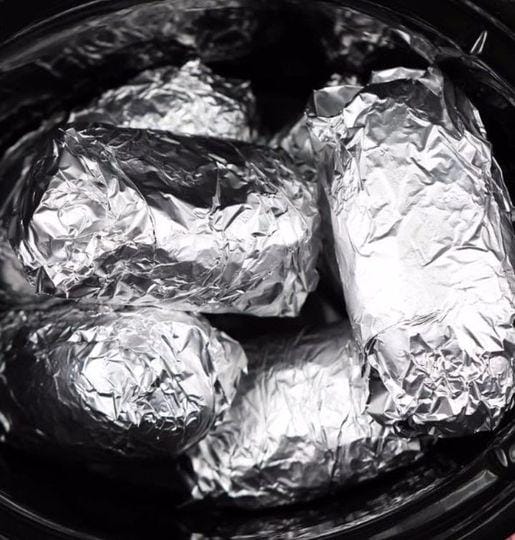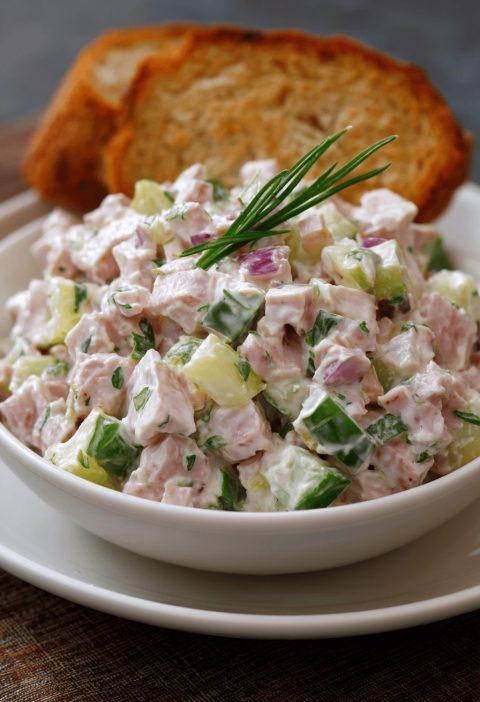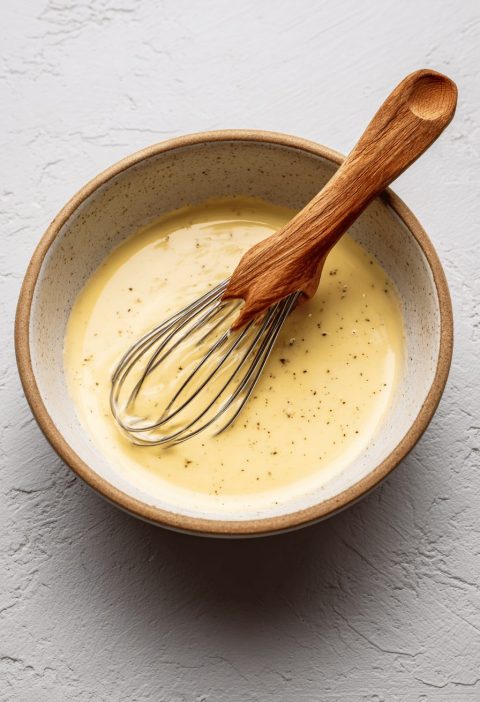Would you like to save this?
There’s something truly satisfying about a perfectly baked potato—its fluffy interior, crisp skin, and the endless possibilities for toppings. Yet, many of us have grown accustomed to the unpredictability of microwave-baked potatoes. Often, they end up unevenly cooked, with some parts overdone and others still hard. Enter the slow cooker—a game changer for this humble vegetable. Slow-cooking potatoes wrapped in tin foil produces consistently excellent results, combining even cooking with rich, infused flavors that are nothing short of sublime.
I fondly remember the first time I discovered this slow-cooker method. It was a chilly winter evening, and I wanted to make a hearty, comforting meal without spending hours in the kitchen. The slow cooker was my secret weapon, and it turned out perfectly tender and flavorful baked potatoes that night. The ease of preparation combined with the rich taste and texture of the potatoes made it a hit with the family. Since then, it has become my go-to method for making baked potatoes, and I’m excited to share this foolproof technique with you.
Ingredients:
Potatoes (as many as you need)
Olive oil
Salt
Aluminum foil
A fork
Instructions:
1. Preparation:
Begin by preparing your potatoes. Rinse them thoroughly under cold running water to remove any dirt or residue. Scrub the skins gently with a brush if necessary. After washing, pat the potatoes dry with a clean kitchen towel. This step is crucial as excess moisture can affect the crispness of the potato skin and hinder proper cooking. Inspect each potato carefully, removing any eyes or blemishes with a small knife.
2. Piercing:
To ensure even cooking and prevent the potatoes from bursting, use a fork to pierce each potato. Make several puncture holes around the entire surface. These holes allow steam to escape during cooking, which helps in achieving a tender and evenly cooked potato. The fork also creates small channels for the oil and salt to penetrate, enhancing the flavor of the potato.
3. Seasoning:
Drizzle a small amount of olive oil over each potato. Use your hands or a brush to spread the oil evenly, ensuring that each potato is well-coated. This step not only adds flavor but also helps in crisping up the skin during the cooking process. After applying the olive oil, sprinkle a generous amount of salt over each potato. The salt enhances the natural flavor and creates a deliciously seasoned skin. Adjust the salt according to your taste preference—if you’re watching your sodium intake, you can use less.
4. Wrapping:
Take a piece of aluminum foil and place a seasoned potato in the center. Fold the foil around the potato, making sure to wrap it securely. The foil should cover the entire potato without any exposed parts. Proper wrapping is essential as it ensures that the potato cooks evenly and retains its moisture. It also prevents the potatoes from coming into direct contact with the slow cooker’s surface, which can lead to uneven cooking.
5. Slow Cooking:
Place the foil-wrapped potatoes into your slow cooker. If you’re cooking a large batch, arrange them in a single layer, if possible. For a relaxed cooking time, set your slow cooker to the low setting and cook the potatoes for 7-8 hours. This extended cooking time allows the flavors to meld and the potatoes to become perfectly tender. If you’re short on time, you can set the slow cooker to high and cook the potatoes for 4-5 hours. The high setting will cook the potatoes faster but may not allow for as much flavor development as the low setting.
6. Serving:
Once the cooking time is up, carefully remove the potatoes from the slow cooker. Be cautious as the foil will be hot. Unwrap each potato and check for tenderness by gently squeezing the potato (use a towel or oven mitt to protect your hands). The potato should be soft and give easily when pressed. If necessary, return any undercooked potatoes to the slow cooker for additional time.
Serve the baked potatoes immediately while they’re still warm. You can top them with your favorite toppings—classic choices include shredded cheese, sour cream, chives, and crispy bacon bits. For a more elaborate touch, consider adding sautéed mushrooms, caramelized onions, or even a dollop of chili. The possibilities are endless, and each topping adds its own unique flair to the dish.
Variations and Substitutions:
Seasoning Variations:
Experiment with different seasonings to customize the flavor of your potatoes. Try adding garlic powder, paprika, or dried herbs like rosemary or thyme to the olive oil before seasoning the potatoes.
Toppings: If you’re looking for a healthier twist, top your potatoes with Greek yogurt instead of sour cream, or try a sprinkle of nutritional yeast for a cheesy flavor without the calories.
Dietary Preferences: For a vegan version, simply omit any non-vegan toppings. For a lower sodium option, use salt-free seasoning blends or herbs and spices to flavor the potatoes.
Conclusion
Using a slow cooker to make baked potatoes is not only incredibly easy but also results in a consistently delicious outcome. The slow cooker’s gentle heat ensures that each potato cooks evenly and becomes wonderfully tender, while the tin foil wrapping locks in moisture and flavor. This method allows you to enjoy perfectly baked potatoes with minimal effort, making it a fantastic option for busy weeknights or relaxed weekends.
The simplicity of this recipe, combined with the flexibility to tailor it to your tastes, makes it a staple in any home cook’s repertoire. Whether you’re serving them as a side dish or making them the star of the meal with a variety of toppings, slow cooker baked potatoes are sure to please. So, next time you’re craving a comforting and satisfying meal, give this method a try—you’ll be rewarded with potatoes that are both tender and full of flavor, and the ease of preparation will make it your new favorite cooking technique. Enjoy!







